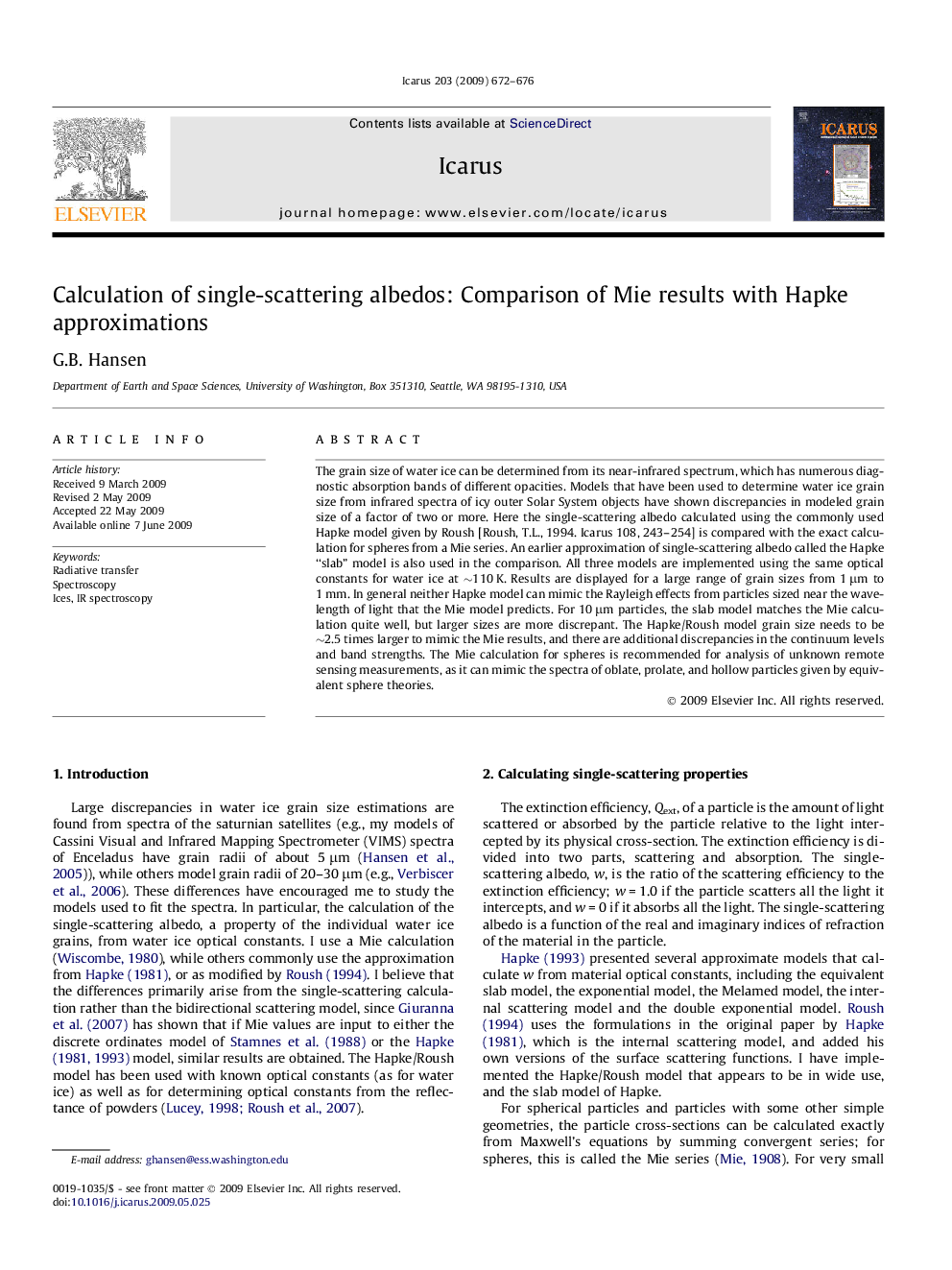| Article ID | Journal | Published Year | Pages | File Type |
|---|---|---|---|---|
| 1774908 | Icarus | 2009 | 5 Pages |
The grain size of water ice can be determined from its near-infrared spectrum, which has numerous diagnostic absorption bands of different opacities. Models that have been used to determine water ice grain size from infrared spectra of icy outer Solar System objects have shown discrepancies in modeled grain size of a factor of two or more. Here the single-scattering albedo calculated using the commonly used Hapke model given by Roush [Roush, T.L., 1994. Icarus 108, 243–254] is compared with the exact calculation for spheres from a Mie series. An earlier approximation of single-scattering albedo called the Hapke “slab” model is also used in the comparison. All three models are implemented using the same optical constants for water ice at ∼110 K. Results are displayed for a large range of grain sizes from 1 μm to 1 mm. In general neither Hapke model can mimic the Rayleigh effects from particles sized near the wavelength of light that the Mie model predicts. For 10 μm particles, the slab model matches the Mie calculation quite well, but larger sizes are more discrepant. The Hapke/Roush model grain size needs to be ∼2.5 times larger to mimic the Mie results, and there are additional discrepancies in the continuum levels and band strengths. The Mie calculation for spheres is recommended for analysis of unknown remote sensing measurements, as it can mimic the spectra of oblate, prolate, and hollow particles given by equivalent sphere theories.
